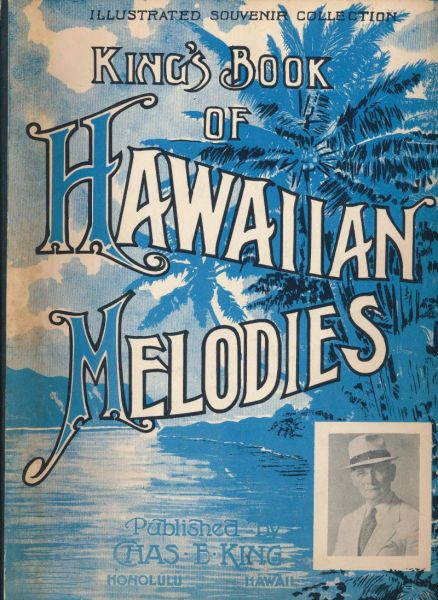Digital Collections
Celebrating the breadth and depth of Hawaiian knowledge. Amplifying Pacific voices of resiliency and hope. Recording the wisdom of past and present to help shape our future.
Kipi Brown
We were at the Bishop Museum Archives the other day working on some chants for Ka‘ū when—as so often happens in the process of paging through the mele collections of Roberts and Mader—something completely unrelated and totally irresistible popped into view, ‘o ia ho‘i, the following note attached to Charles E. King’s "Mī Nei." The original is handwritten and unsigned, but the neat script, careful diction, and early mention of "my husband . . . Pukui" identifies it incontrovertibly as belonging to the sharp pencil and subtle wit of Mary Kawena Pukui.
My husband was a friend of Charles King and whenever Charlie had a show, Pukui was the back stage property man. The first person to dance this hula, Mi Nei, was Lydia Kaloio, under the direction of Mr. King himself. At this line, "Alawa mai ‘oe, aia i lalo ia nani," Lydia made a gesture toward her feet.
Sometime later I saw other dancers put a hand at the waistline and put on a naughty look—indicating that "aia i lalo ia nani" was somewhere else. I asked my husband to ask Mr. King just where this "nani" was. Poor Mr. King was shocked at the question—there was but one "nani" that he had in mind, just as he himself had taught it to Lydia—the "nani" of pretty feet. The composer should know what he means—don’t you think so? So I am passing this on to you as received from Charley King himself.
No laila, e ke hoa hula aloha nui ‘ia, i kou kuhilima ‘ana i kēia laina o kā Kale Kini mele, aia i hea ka mea nani o lalo? In light of Mrs. Pukui’s straight-from-the-horse’s-mouth explanation, where, dear hula friend, is your "nani" located? And what, pray tell, is that naughty expression doing on your lovely face?

"Mi Nei – How About Me?" appears on page 50 of the 1948 edition of Charles Edward King’s Book of Hawaiian Melodies. King describes "Mī Nei" as "An interpretative mele," and he indicates two points in the text where the "hula dancer sing[s] the song": "Ke hone nei ihu, ‘olu ‘oe ‘olu au" and "lilo ia mi nei."